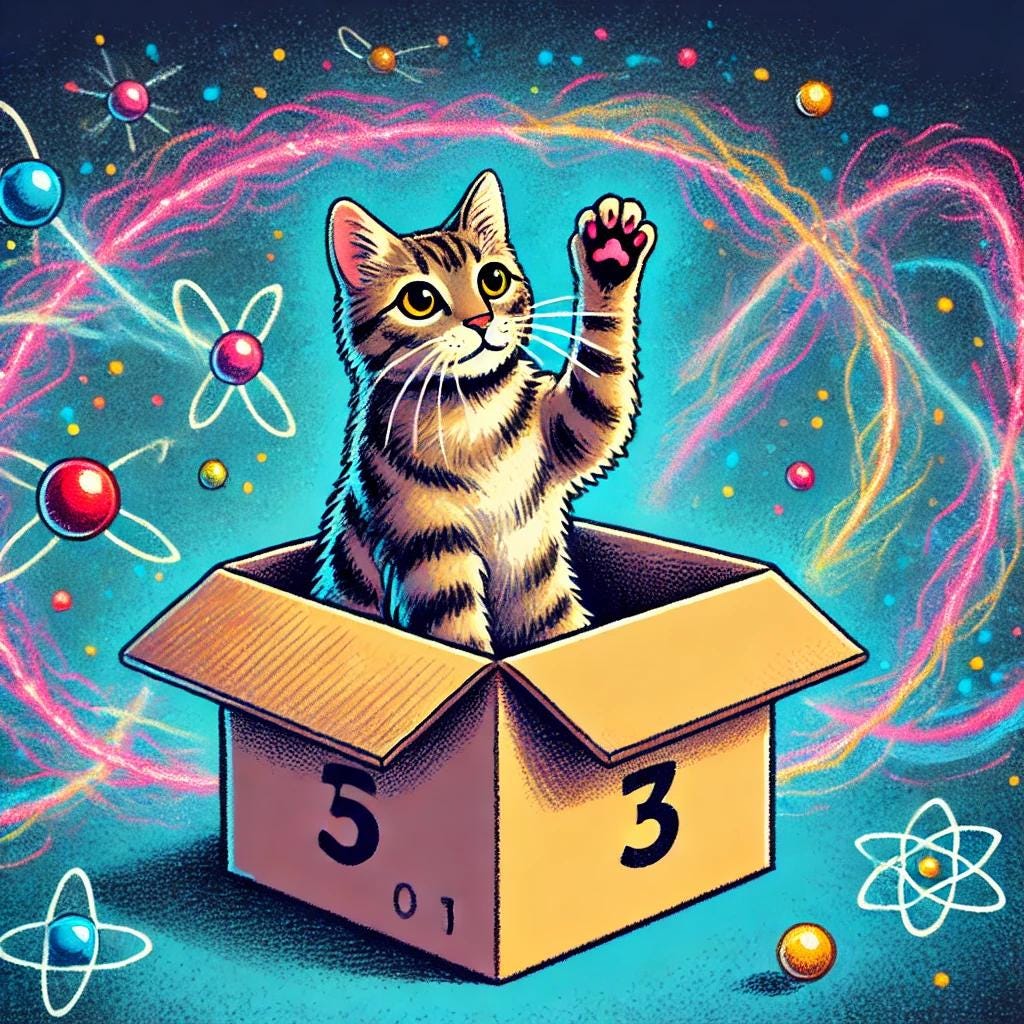As an amateur writer, I often wield a curious blend of cutting-edge technology and old-school skepticism. Picture me as a modern-day alchemist, turning AI-generated gibberish into something that (hopefully) sparkles with insight and wit. Although I was writing this blog for some three years before the explosion of large language models (LLM), I’ve now come to rely on a motley crew of LLMs—OpenAI’s ChatGPT, Anthropic’s Claude, Google’s Gemini, and Notebook LM—to help me churn out articles and blog posts. They’re like my quirky, sometimes unreliable assistants. But don’t worry, I keep them on a tight leash with a process I’ve honed over time.
How the AI Circus Begins
Let me paint you a picture: I’m staring at a blank screen, the cursor blinking like it’s taunting me. I summon ChatGPT for help. "Hey, give me some thoughts on quantum mechanics," I type. Within seconds, it spews out an explanation so polished that I half-expect it to end with a bow. But I know better than to trust this digital smooth-talker. Generative AI is a master of sounding plausible while sneakily making stuff up. It’s like that friend who tells you they "totally saw Bigfoot" last weekend. Enter my secret weapon…
The Ritual
Here’s how it works. When an LLM hands me a shiny nugget of information, I don’t just accept it at face value. I immediately scuttled off to Google, searching for the terms, names, or studies it mentioned. I’ll check if these supposed "facts" are backed up by real experts or just figments of the AI’s imagination. It’s like being the skeptical audience member at a magician’s show, squinting to spot the sleight of hand.
Step 1: Vetting the Source
When Claude claims a fact, I ask myself, "Who said this? And why should I care?" I’ll Google the authors or organizations it references, diving into their reputations like a detective on a juicy case. If Gemini cites a book, I’ll look it up on library platforms to confirm it exists (you’d be surprised how often AI conjures phantom publications). This part of the process is like sniffing the milk before you pour it into your coffee—better safe than sorry.
Step 2: Testing the Claims
When the bots provide juicy tidbits—a statistic here, a provocative idea there—I spread my net wider. I search for alternative sources and compare their perspectives. I even pit the LLMs against each other. If ChatGPT says one thing and Claude says another, I know I’m onto something. It’s a bit like refereeing a sibling squabble: "Claude, where’s your evidence? ChatGPT, stop exaggerating!"
Step 3: Gut Check
Finally, I take a step back to reflect. Do these claims make sense, given what I already know? If not, it’s time to roll my sleeves and dive deeper. Using LLMs is like assembling IKEA furniture—it looks straightforward, but if you don’t pay attention, you’ll end up with something wobbly.
Writing "Quantum Intuition"
Let me tell you how I wrote my latest blog post, "Quantum Intuition." It started with a simple question: "Can humans have a gut instinct powered by quantum mechanics?" ChatGPT was my first stop. It gave me a dazzling explanation of quantum phenomena—superposition, entanglement, and the like—with all the charm of a college professor who moonlights as a stand-up comedian. It was great stuff, but I wasn’t about to take it at face value.
I dove into Google to verify every claim. Did migratory birds really have a quantum compass? Yes, according to reputable sources like National Geographic and academic studies. Could human mitochondria exhibit quantum behavior? The jury’s still out, but I found enough research to suggest it’s possible.
Then, I turned to Claude for a philosophical spin on quantum intuition. Claude obliged, waxing poetic about how humans might sense probabilities like birds sense magnetic fields. It was inspiring, but I needed a reality check, so I Googled the terms it used and found some supporting evidence in journals and research articles. Meanwhile, Gemini suggested a list of books and studies, which I cross-referenced to ensure they weren’t AI imagination figments.
Notebook LM became my organizer, corralling all these threads into a coherent outline. At one point, I asked ChatGPT to summarize its own claims and critique them, which led to an amusing exchange where it politely poked holes in its earlier enthusiasm. By the time I was done, I had a blog post exploring quantum intuition with scientific rigor and playful speculation.
Why It All Matters
Using LLMs isn’t just about speed or convenience; it’s about collaboration. These tools are like overenthusiastic interns—full of ideas but in dire need of supervision. My process ensures that I’m not just regurgitating plausible-sounding nonsense but creating informed, accurate, and engaging content.
Ultimately, writing with LLMs is a dance between trust and skepticism. They provide the sparks of inspiration, but I must ensure the fire burns brightly and doesn’t set off any alarms. And if that means spending a few extra minutes Googling Schrödinger’s cat, so be it. After all, who wouldn’t want to make sure the cat’s story checks out?









